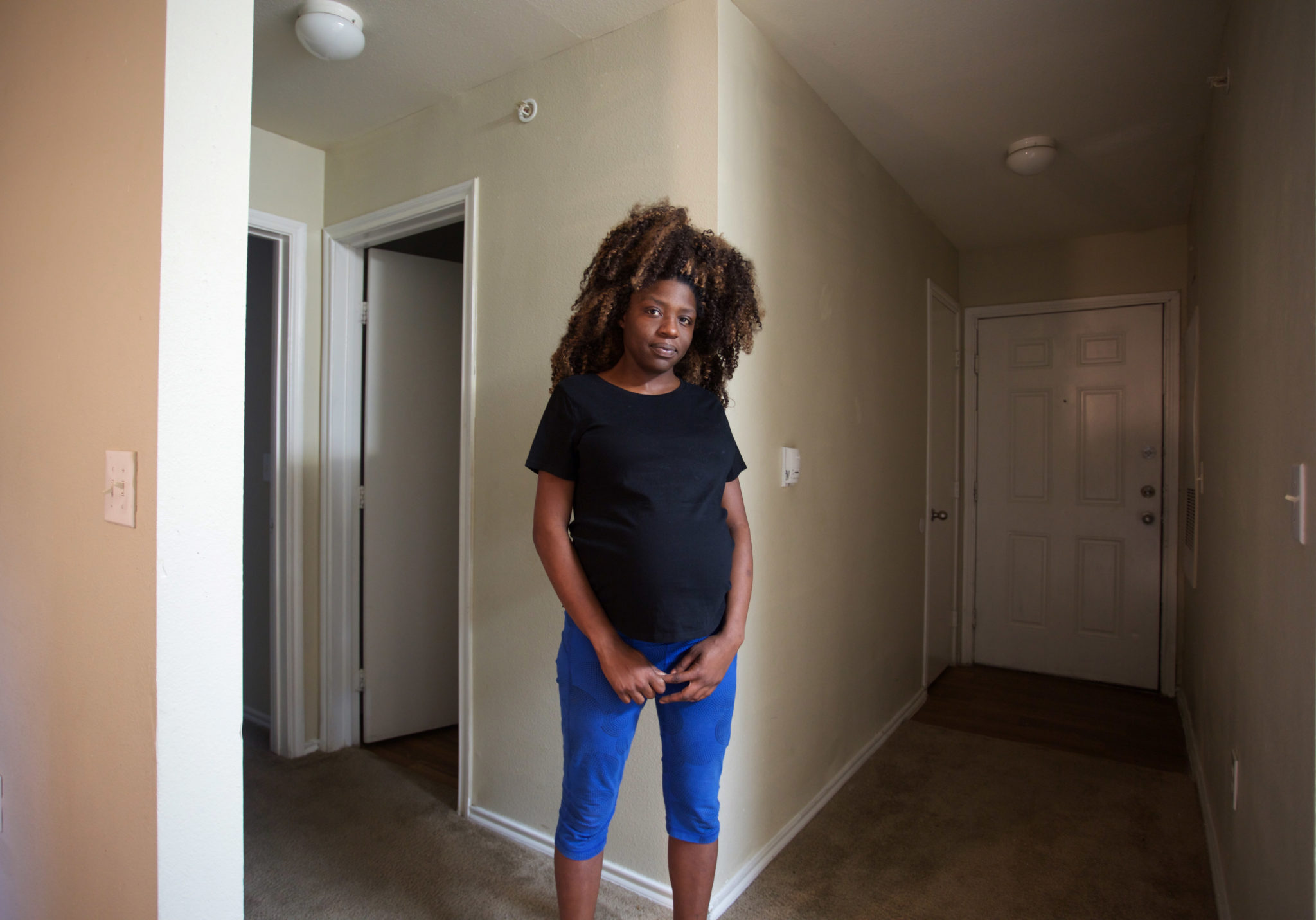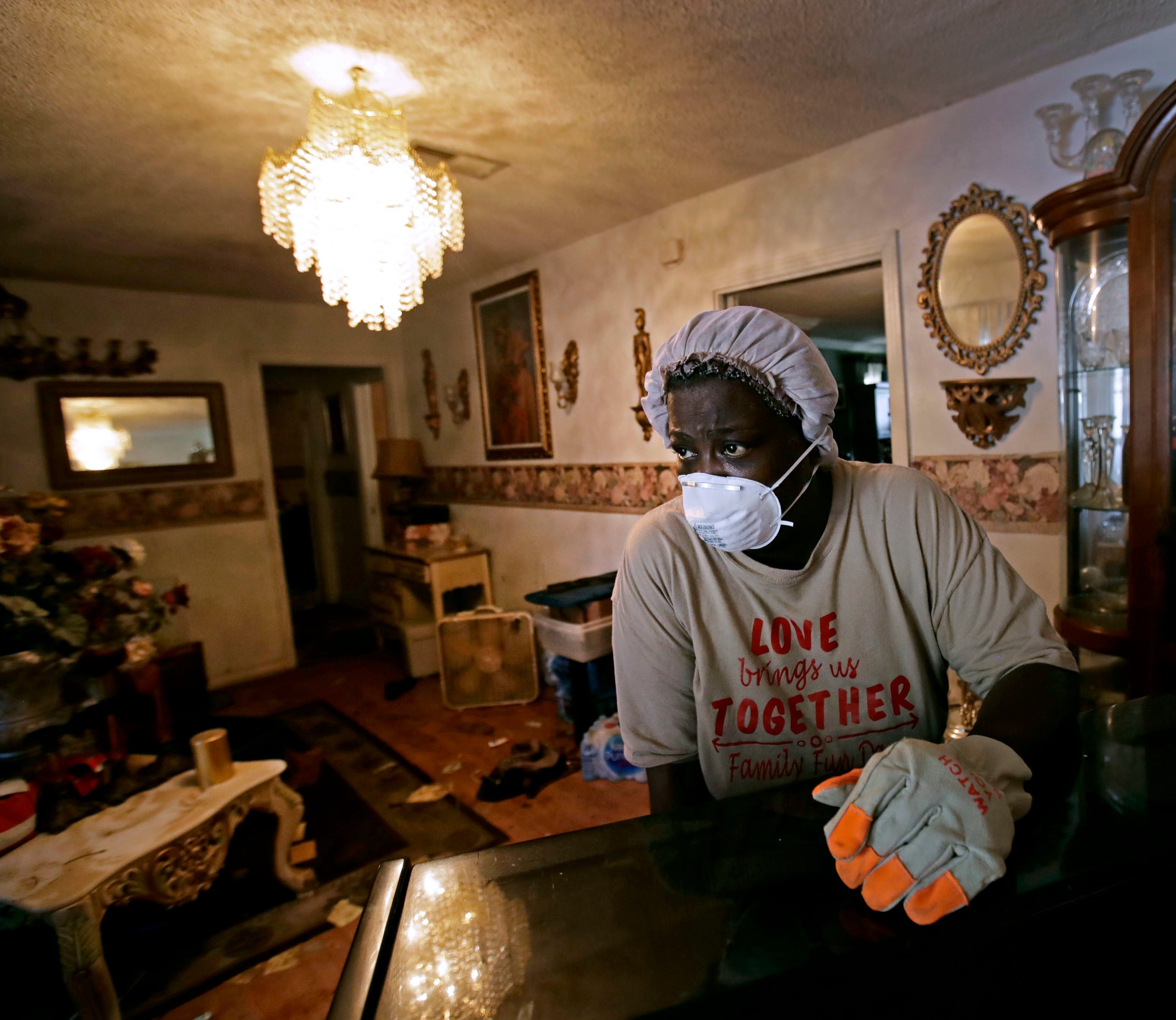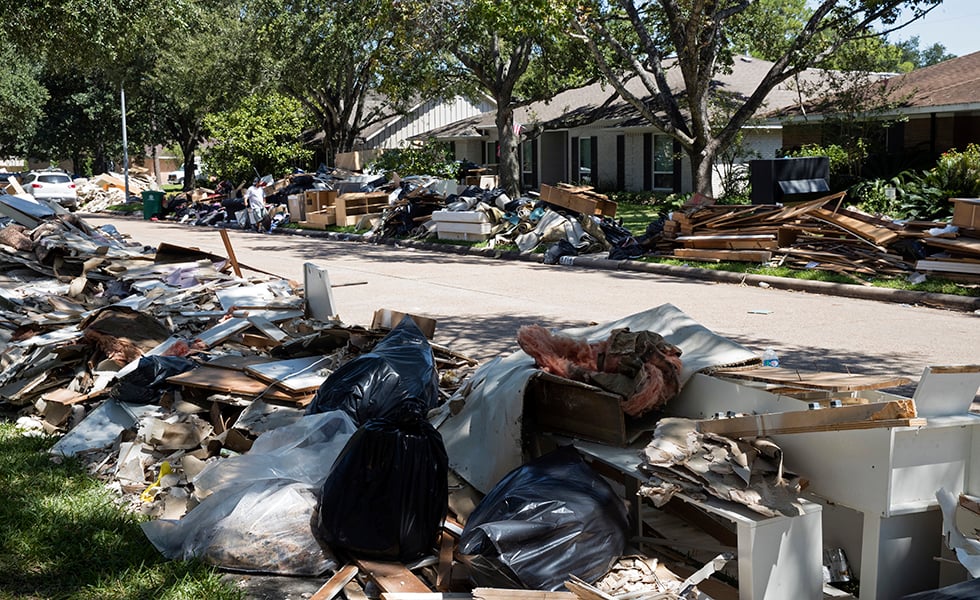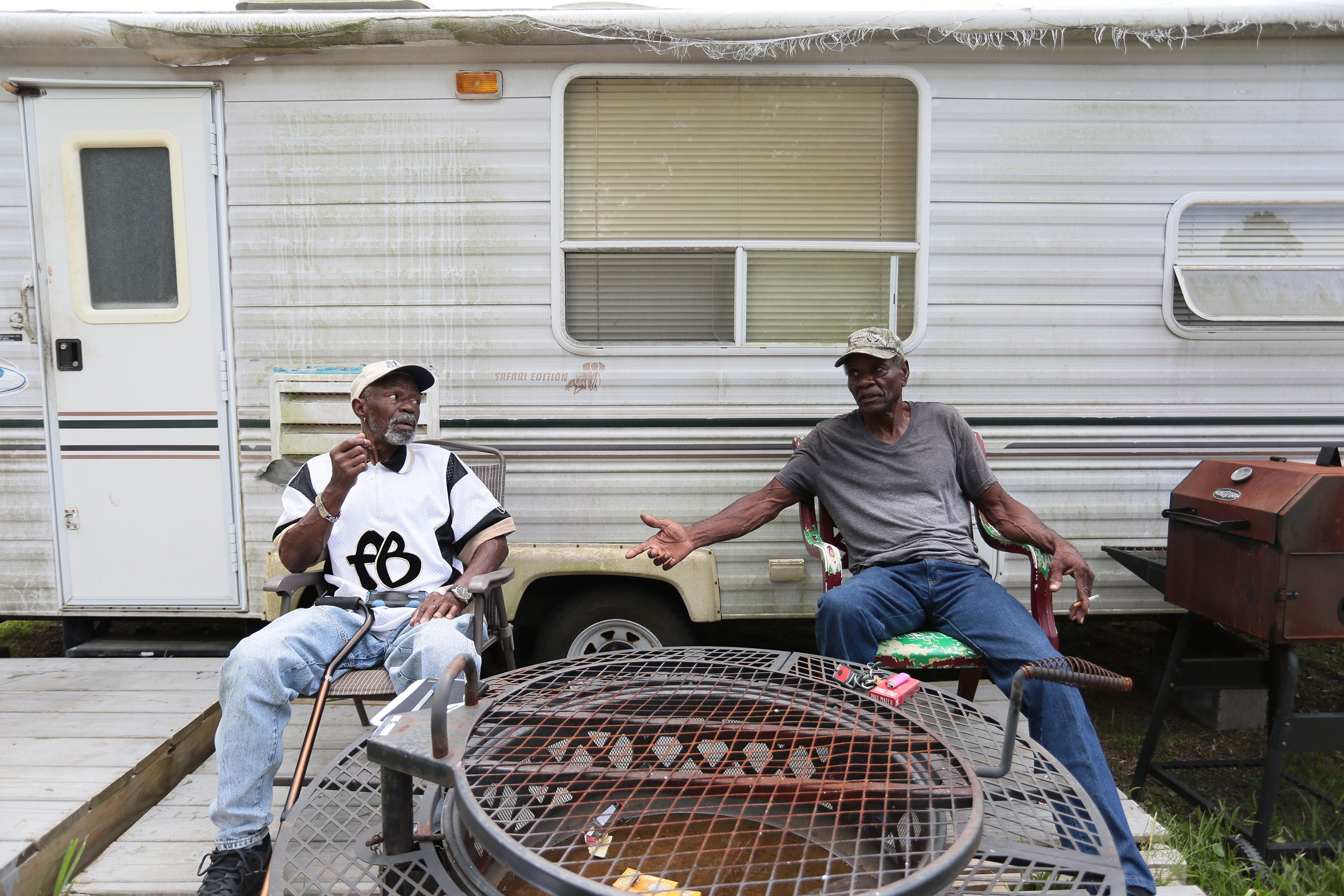
Hung Out to Dry: Low-Income Houstonians Stuck in Damaged Homes Months After Harvey
Housing advocates say many Houstonians are stuck in unsafe homes and aren't receiving disaster relief from FEMA.

A version of this story ran in the February 2018 issue.
Above: Dorothy Jones in her new apartment in Houston. FEMA turned down her family's application for housing assistance.
Dorothy Jones stands in her near-empty apartment in Houston and worries that her kids won’t understand why there’s no Christmas tree this year. It’s late December and the living room is bare, save for a baby rocker and a houseplant. Jones, a pregnant single mom of three, moved in just a few days earlier, but there wasn’t much to relocate. Her family lost everything when water from Hurricane Harvey inundated their apartment in northeast Houston.
For three months, the family lived in their storm-ravaged home. Mold crept up the walls. Jones and her girls all struggle with asthma, and they got increasingly sick. Often unable to breathe, with headaches and fevers, they made at least 10 trips to the doctor’s office or ER, Jones said. Her daughters frequently missed school. Jones said doctors suggested inducing birth at just 34 weeks in order to treat her unborn child for mold exposure, but she didn’t have a safe place to care for the baby.
FEMA turned down the family’s application for housing assistance because her landlord claimed the apartment was livable, Jones said. Nonetheless, it was later condemned by the city because of the mold. Finally, in late November, she got some relief when BakerRipley, a Houston nonprofit, put her family up in a motel while it looked for a new place for them to live. Jones is relieved to have better living conditions, but she worries about the mold’s long-term effects on her family, including the new baby.
“There’s a myth that the federal government takes care of everybody in the wake of these disasters.”
“I try to keep control, but sometimes I break down and cry,” said a tearful Jones.
As the Texas Gulf Coast slowly recovers from the one of the worst natural disasters in U.S. history, housing advocates say there are still many low-income Houstonians stuck in unsafe homes, and that federal aid isn’t reaching some of the people who need the most help.
“There’s a myth that the federal government takes care of everybody in the wake of these disasters,” said John Henneberger, co-director of Texas Housers, a fair housing advocacy group. Applying for assistance is a “logistical maze with a lot of trap doors,” in a system that’s “designed to push people out and on to their own,” he said. “It’s pretty cold.”
Of the approximately 895,500 people who applied for Harvey assistance from FEMA as of late January, about 369,500 have received some help. Almost one-third of applicants were deemed ineligible; the rest withdrew or are still pending.
“I try to keep control, but sometimes I break down and cry.”
“FEMA is, ‘No, no, no and then no,’ that’s what all my constituents are saying,” state Representative Senfronia Thompson, a Houston Democrat whose district includes Jones’ old apartment, told the Observer. “So we’re trying to use nonprofits … every resource available to us.”
Renters who have received FEMA assistance have mostly done so through hotel vouchers. But the temporary housing can abruptly end and is frequently far from work or school, so some stay in their damaged homes instead. An affordable housing shortage, exacerbated by the hurricane, leaves many without options.
BakerRipley is paying for the first four months of Jones’ rent, then it’s up to her. Now that they have a new home, Jones is preparing for what could be a long recovery for her new baby — a boy named Noah.


